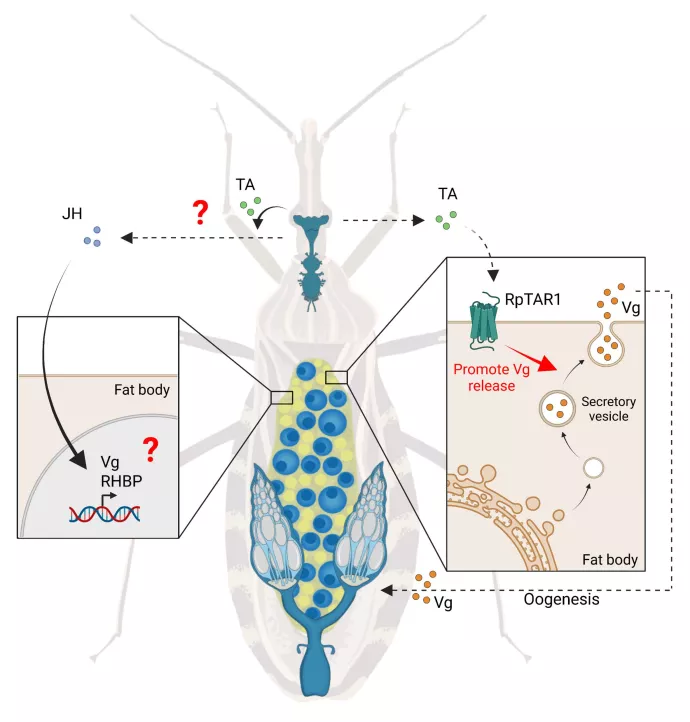
Prestigious Insect Biochemistry and Molecular Biology Journal publishes Dr. Luca Finetti's research on Rhodnius prolixus
Drs. Luca Finetti and Jimena Leyria, had their paper Tyraminergic control of vitellogenin production and release in the blood-feeding insect, Rhodnius prolixus published by Insect Biochemistry and Molecular Biology
Both Finetti and Leyria are Postdoctoral Fellows in Lange and Orchard Lab.
DOI: https://doi.org/10.1016/j.ibmb.2023.103948
In insects, the biogenic amine tyramine (TA) has been shown to control several physiological processes. Recently, the involvement of the type 1 tyramine receptor (TAR1) in reproductive processes has been demonstrated in different insects. Here, we investigate the putative role of Rhodnius prolixus TAR1 (RpTAR1) in reproduction in female R. prolixus. RpTAR1 transcript was highly expressed in tissues associated with egg development. Moreover, after a blood meal, which is the stimulus for full egg development, RpTAR1 transcript was upregulated in the ovaries and in the fat body. After RNAi-mediated RpTAR1 knockdown, an ovarian phenotype characterized by the absence or reduction of egg production was observed. Furthermore, protein and Vg accumulation in the fat body was observed, suggesting an impairment in protein release from the fat body into the hemolymph. However, even though fewer eggs were produced and laid, there was no difference in hatching ratio of those laid, in comparison to the controls, indicating that the overall low protein uptake by the ovaries did not influence the viability of individual eggs produced. Interestingly, the eggs from dsTAR1-treated insects appeared more red, indicating a higher content of RHBP compared to the control. A higher colocalization between Vg and Rab11, a marker for the recycling endosome pathway, was observed after dsTAR1 injection, suggesting that a more active lysosome degradation pathway in response to the Vg accumulation may occur. In addition to the Vg accumulation in the fat body, dsTAR1 treatment altered JH pathway. However, it remains to be elucidated whether this event is either directly related to the RpTAR1 downregulation or for a consequence to the Vg accumulation. Lastly, the RpTAR1 action on Vg synthesis and release in the fat body was monitored in the presence or absence of yohimbine, the antagonist of TAR1, in an ex-vivo experiment. Yohimbine antagonises the TAR1 stimulated release of Vg. These results provide critical information concerning the role of TAR1 in Vg synthesis and release in R. prolixus. Furthermore, this work opens the way for further investigation into innovative methods for controlling R. prolixus.

